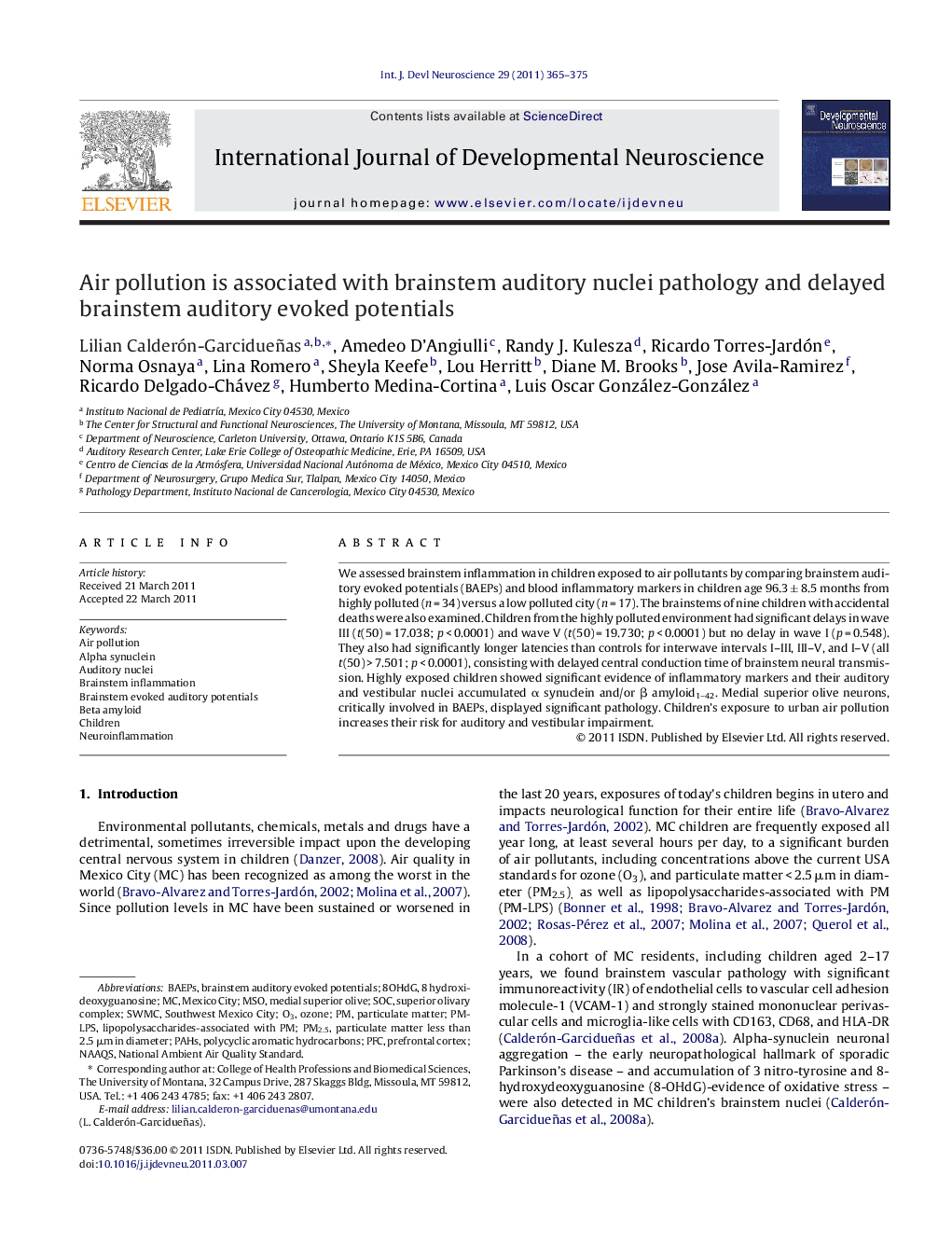| Article ID | Journal | Published Year | Pages | File Type |
|---|---|---|---|---|
| 2786690 | International Journal of Developmental Neuroscience | 2011 | 11 Pages |
We assessed brainstem inflammation in children exposed to air pollutants by comparing brainstem auditory evoked potentials (BAEPs) and blood inflammatory markers in children age 96.3 ± 8.5 months from highly polluted (n = 34) versus a low polluted city (n = 17). The brainstems of nine children with accidental deaths were also examined. Children from the highly polluted environment had significant delays in wave III (t(50) = 17.038; p < 0.0001) and wave V (t(50) = 19.730; p < 0.0001) but no delay in wave I (p = 0.548). They also had significantly longer latencies than controls for interwave intervals I–III, III–V, and I–V (all t(50) > 7.501; p < 0.0001), consisting with delayed central conduction time of brainstem neural transmission. Highly exposed children showed significant evidence of inflammatory markers and their auditory and vestibular nuclei accumulated α synuclein and/or β amyloid1–42. Medial superior olive neurons, critically involved in BAEPs, displayed significant pathology. Children's exposure to urban air pollution increases their risk for auditory and vestibular impairment.
► Environmental pollutants have detrimental effects upon the developing brain. ► We assessed brainstem inflammation in children exposed to air pollutants. ► Children from polluted environments had delays in BAEPs waves III and V. ► Auditory nuclei accumulated α synuclein and/or β amyloid1–42. ► Urban air pollution increases children's risk for auditory and vestibular impairment.
